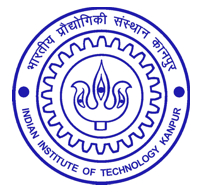Lu, Darsen, Sourav De, Mohammad Aftab Baig, Bo-Han Qiu, and Yao-Jen Lee
Computationally efficient compact model for ferroelectric field-effect transistors
to simulate the online training of neural networks
Semiconductor Science and Technology (2020)
DOI: 10.1088/1361-6641/ab9bed
Abstract: In this paper, a compact drain current formulation that is simple and adequately computationally efficient for the simulation of neural network online training was developed for the ferroelectric memory transistor. Tri-gate ferroelectric field effect transistors (FETs) with Hf0.5Zr0.5O2 gate insulators were fabricated with a gate-first high-k metal gate CMOS process. Ferroelectric switching was confirmed with double sweep and pulse programming and erasure measurements. Novel characterization scheme for drain current was proposed with minimal alteration of ferroelectric state in subthreshold for accurate threshold voltage measurements. The resultant threshold voltage exhibited highly linear and symmetric across multilevel states. The proposed compact formulation accurately captured the FET gate-bias dependence by considering the effects of series resistance, Coulomb scattering, and vertical field dependent mobility degradation.

Fig.: Transmission electron micrograph of the fabricated tri-gate Fe
finFET device across the fin, with approximately 60 nm fin width, 30 nm fin
height, and 10 nm HZO Fe layer.
Acknowledgements: This work was jointly supported by the Ministry of Science and Technology (Taiwan) grant MOST–108–2634–F–006–08 and is part of research work by MOST’s AI Biomedical Research Center. We are grateful to the Taiwan Semiconductor Research Institute for nanofabrication facilities and services and to Dr. Wen-Jay Lee and Nan-Yow Chen of the National Center for High-Performance Computing for helpful suggestions on AI computation. This manuscript was edited by Wallace Academic Editing.





